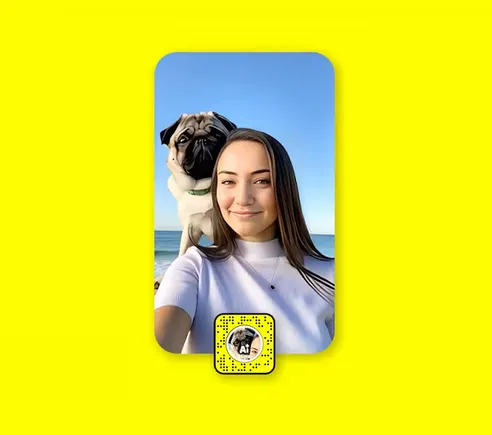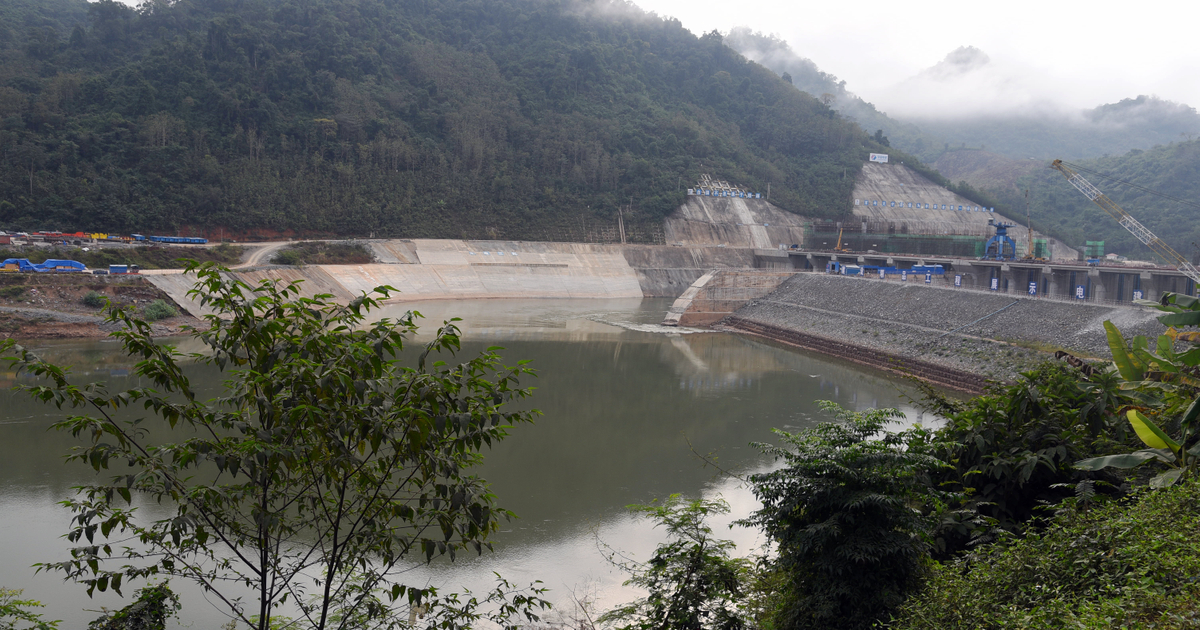SEO for Travel Websites: 4 Tactics for Success
Travel is back in a big way, and customers are looking to go on new adventures. SEO for travel websites can help them find you before they pack their bags.

“I’m going on an adventure!”
That’s what Bilbo Baggins shouts to his neighbors as he’s running off to join an epic quest — and with the right approach to search engine optimization (SEO), your travel website can make customers feel the same way.
But what does travel SEO look like? How do you build your SEO strategy using tools like keyword research, social media, site design and even a travel blog? What’s the secret to catching a customer’s attention before they’ve even packed their bags?
Today, we’ll answer all these questions and more — so get ready for a journey through travel SEO!
Travel’s Back, Baby
Now that we’ve put some time between ourselves and the beginning of the pandemic, it’s easy to forget what things were like when COVID-19 first showed its ugly face. That’s especially true when it comes to travel. Whether you were locked in your house or out doing essential work, you were probably too busy washing your hands to spend too much time taking notes on every little change in the travel industry.
Lucky for us, the internet never forgets. Here are a few statistics that help put those pandemic impacts into perspective:
2020 was the worst year on record for global tourism. International travel dropped by 74%, with worldwide destinations seeing 1 billion fewer international arrivals than in 2019. Expert revenue losses reached an estimated $1.3 trillion. That’s more than 11 times the loss created by the 2009 economic crisis. Between 100 and 120 million travel industry jobs were put at risk. Most of these were in small- and medium-sized enterprises.In 2021, international arrivals were down 85% from 2019. There were 147 million fewer international arrivals compared to 2020 and 460 million fewer than in 2019.Long story short, COVID-19 was bad news for the travel business — and for those of us who were looking forward to celebrating some big moments in 2020. (I won’t bore you with the details, but I may have attended an at-home graduation where the rest of the audience was simulated by Halloween skeletons.)
There’s a silver lining, though. If your travel company made it through the pandemic or started up since then, you’re officially one of the most resilient businesses out there. Plus, with everyone chomping at the bit to get back to vacations, family visits and any adventure that doesn’t take place in the living room, your company is in a perfect position to succeed.
That’s right: Travel’s back, baby. To prove it, let’s take a look at the number of people who passed through Transportation Security Administration (TSA) checkpoints on August 15 throughout the years:
2019: 2,576,965.2020: 773,319.2021: 1,980,585.2022: 2,232,631.And that’s not all. Some governments are taking an active role in supporting the travel industry — like the U.S., where a 5-year goal aims to increase international tourism by 90 million visitors. These tourists will spend an estimated $279 billion annually by 2027.
If you want to be part of this growth, you need a way to attract and communicate with visitors. That means you need a travel website. And that means — drumroll, please….
You need to know all about SEO for travel websites.
Keywords — The First Step in Travel SEO
If you’ve spent any time around social media experts, content writers, website designers or other people who regularly parley with search engines, you’ve probably heard a thing or two about keywords. In many ways, they’re the beating heart of SEO.
However, that doesn’t mean every content creator or SEO specialist has this stuff down to a science. Keywords are more of an art — which means there are always questions to be answered, approaches to be experimented with and new trends to watch.
Let’s take a look at some of the foundational wisdom surrounding keywords for travel SEO:
Subscribe to
The Content Marketer
Get weekly insights, advice and opinions about all things digital marketing.
Thanks for subscribing! Keep an eye out for a Welcome email from us shortly. If you don’t see it come through, check your spam folder and mark the email as “not spam.”
What Can Travel Keywords Look Like?
When you first start thinking about keywords, your job is to get inside a customer’s head. What do they want? What do they need to know? How do they approach their research and decision-making processes?
Remember, different stages of the customer journey involve different keyword needs. Someone who’s just starting to think about their vacation might research destinations, while someone looking for a travel agency would search for reviews and ratings.
Of course, it’s not just the customer’s mind you’ll need to understand. It’s also important to brush up on the way search engines think. For example, let’s say you’re searching “pizza near me” — and while your search engine will certainly bring up locations like Pizza Hut or Domino’s, it’s also smart enough to recommend Italian restaurants that also serve pizza. (Hint: This has a lot to do with local SEO!)
Simply put, search engines and customers are working together to navigate the internet. When you understand how they work together, you can put your travel website right in their path.
For a closer look, let’s break down some potential keywords for your travel website:
Locations and Activities
“Best beaches for dogs”“Haunted cities in America”“What to do in Japan with kids”“Romantic things to do in Paris”“Castles in Scotland”Transportation
“When is the best time to book a flight”“Cheapest airlines”“Public transportation in London”“How do you get to Machu Picchu”“How old do you have to be to rent a car”Accommodations
“Best places to stay in Italy”“Hotels close to Disney World”“Airbnb reviews”“Motels that allow dogs”How Do You Find Travel Keywords?
Although it’s easy to make guesses about what your customers want and how they think, you’ll need to do concrete research to find their exact search terms. There are a lot of ways to make that happen, but one of the easiest is to use the “related searches” section of your search engine.
This section is generated using phrases and topics related to whatever you just searched for. When I looked up “best dog breed,” here’s what came up in the related searches:

You can also use your search bar to do this kind of research. Here’s an example:

(This is an impossible question, by the way — but I’ve decided the answer is “St. Bernard.”)
There are also keyword research tools like Semrush and Moz that can help you learn more about search volume, relevance, difficulty and more.
How Do You Take Advantage of Travel Keywords?
Once you’ve chosen keywords that make sense for your audience, it’s time to put them to work. Depending on your goals and approach, you might have one target keyword — for example, “best places to eat in Portland” — and several smaller or less valuable keywords related to your topic, like:
Seafood.Kids’ meals.Vegan options.Restaurants.Cuisine.The “value” of a keyword is often determined based on how often it appears in search terms, how closely related it is to your main topic and more.
You’ll use all of these keywords (and more!) to optimize your website or content for search engines, but your focus will be on that one target keyword. The goal is to use these smaller phrases to support the big one — like building a foundation under a house.
Making Your Travel Website SEO-Friendly
A lot of interwoven factors go into SEO for travel websites. Whether you’re working on enterprise SEO or a smaller campaign, you’ll need to consider each element when trying to get those search engines on your side.
Here are just a few elements to think about:
Website Design
Reflect on your most recent experience with a website. How easy was it to navigate from one page to the next? Was the information presented in ways that made sense? Did it take you a long time to find what you needed?
These are all elements of website design, and they have a big impact on user experience. However, there’s more to the story — especially when it comes to SEO. Your website design needs to make it easy for search engines to understand who you are, what you do and how you interact with customers. If your approach isn’t solid, a search engine might not know how to present your content — which means you could get buried under other search results.
One particularly important part of website design is page loading time. Faster sites are easier for search engines to read or “crawl” — plus, visitors won’t have to wait around for your site to work.
Your Linking Strategy
Links are a key part of travel SEO. They tell search engines how different pieces of content may be related and which are most relevant to users.
There are two different types of links:
Internal: Internal links take a visitor from one part of your website to another. They’re great for helping a search engine understand how your site is meant to be navigated.External: External links come from another domain. Some of these are good for SEO — for example, a well-known blogger linking to your travel agency as an example of great service — and some aren’t. If a lot of low-quality or unreliable websites link to your site, search engines might reduce your domain authority. Luckily, it’s possible to “disavow” these links.Because internal and external links have a role to play in travel SEO, it’s important to have a strategy that addresses both. Remember, your goal is to build credibility with search engines and customers.
Title Tags and Meta Descriptions
Title tags and meta descriptions are like sneak peeks of your website’s content. Each has a different role to play in SEO:
Title tags: A title tag is a quick, concise description of a blog post or landing page. It helps search engines understand what information you’re providing — but since it shows up in the search results, it also needs to convince readers to click.Meta descriptions: A meta description is a longer preview. Because search engines don’t use it for ranking purposes, its main goal is to communicate the main point of the content — for example, what a reader will learn from a blog post or why they should visit a product landing page.Content Marketing for Your Travel Website
Pretend, for a moment, that you’re a search engine. Your sole purpose is to answer questions by pointing people to relevant websites. If you recommend low-quality, unhelpful content, your users will get frustrated and find a different solution, leaving you all alone.
The takeaway: Search engines have a lot at stake — which means they only want to put the best, most relevant content on the first page of their search results. If your travel website doesn’t fit that description, you can say goodbye to high rankings.
Simply put, content is a big deal for travel SEO. It’s not just about providing clear, valuable information for your audience; it’s about showing search engines that you know what you’re talking about.
But what should that content look like? Let’s take a look at a few examples:
Blog Posts
A travel blog is a great place to use what you’ve learned from your keyword research and provide content your audience will love. It’s also an excellent way to help search engines understand the services you provide.
Keep in mind that not every blog post has to have a primarily promotional angle. Instead, you can offer information about popular destinations, how-to guides, travel tips and more. Keyword research will often help you come up with ideas based on what your current or potential customers want to learn.
Here are a few ideas for your blog:
Best road trips to see autumn colors.How to travel with dogs.Keeping kids entertained on a long flight.Tips for taking better travel pictures.How to pack for a hike.Videos and Animations
Videos and animations make a travel website more engaging. That means customers are more likely to click — which, in turn, means search engines are more likely to see your website as a valuable addition to their results pages. Plus, by creating landing pages or descriptions for your videos, you can also include a few top-value keywords and improve your chances of ranking highly.
Social Media Posts
Social media is a playground for the travel industry. Interactive, entertaining and often short-form, social media content allows you to connect with your audience in ways that boost your visibility to both search engines and potential customers.
For example, you could use social media to start conversations using questions like these:
“Where do you want to vacation this summer?”“What’s #1 on your bucket list?”“What was your favorite childhood vacation?”“Theme parks or camping: Which is the better getaway?”The resulting interactions will encourage your audience to think about your services, even if all they’re doing is answering a fun poll or tagging friends in vacation memories. Along the way, you’ll get insight into what matters most to them (and how to provide it).
Analyzing Other Travel Companies
Now that you have the inside scoop on SEO for travel websites, it’s time to see how all these elements come together. Often, the best way to do that is by looking at your competitors.
Travel SEO, like many parts of marketing, is a learning process. Even the most successful travel agency in the world is still finding new, better ways to communicate with customers — which means there’s no such thing as “perfect” around here. It also means you can watch a competitor’s travel website or social media activity to find out what they’re doing, how customers respond and whether the same thing might work for you.
How to Start Learning
Here are a few ways to get key information from other businesses in the travel industry:
Be a customer for a day. If you really want to find out how a competitor looks to customers, set aside everything you know about the travel industry. If you’re thinking like a travel company, you’ll focus on things an everyday user would never notice — so take a mini vacation from your job and become a professional tourist.Pay attention to search engine results pages (SERPs). Search engine rankings are like the marketing Olympics. If you want to go for gold, you need to know who’s at the top and how they got there.Read their meta descriptions. Although search engines don’t read meta descriptions, people do — which means you can brush up on best practices for these 155-character descriptions. Consider their title tags. Think about which title tags make you want to engage and which are too forgettable. This will help you put your own content in the spotlight later.Keep track of their travel blog posts. The last thing you want to do is become a copycat. Similar topics are just fine, but try to avoid covering the exact same ideas your competitors have already discussed.Take notes on their site design. As you navigate another company’s travel website, think about whether it makes things easier for customers. Remember that elements like internal linking and page load time have an impact on SEO as well as user experience.Look for content types with measurable interaction. Which social media posts receive the most likes? Do certain blog topics get more comments than others?Our Favorite Travel Websites
Looking for a few examples of travel industry websites that really stand out? Here are a few of our favorites:
Tripadvisor

Sleek, colorful and easy to use, the Tripadvisor travel website got my attention right away. It has information about hotels, vacation rentals, restaurants and more — and it even has built-in forums where you can learn more about potential destinations. In this way, the website caters to users at all stages of the customer journey. There’s even a local SEO section, appearing here as a list of ways to explore my hometown. (I can’t be the only one who’s looked up things to do in my own city, right?)
AAA

AAA specializes in travel across North America, Mexico and the Caribbean. Their website is a great example of how to put your content marketing in the spotlight (the link to the road trip article) while still providing interactive elements (the drop-down boxes for travel arrangements). They also have a cool trip-planning tool that encourages visitors to engage with their offerings in valuable ways.
Liberty Travel

The Liberty Travel website does something Tripadvisor and AAA don’t: As soon as it loads, it’s filling my screen with the promise of a beach vacation. Using a large photograph — especially one with such vivid colors — is a great way to make customers want to see that location for themselves. The site also has a red banner at the top, where visitors can keep an eye on the latest pandemic travel restrictions and plan their vacations accordingly.
Make a Splash in the Travel Industry
After experiencing pandemic lockdowns and restrictions for so long, we all deserve a vacation. That’s good news for those of us who are ready to pack our bags, but it’s even better news for your travel business. With a strong SEO campaign, a few best practices and a little inspiration from your competition, you could be the first step toward some incredible journeys.
Of course, travel SEO is a journey all its own — one that you shouldn’t face without encouragement. Lucky for you, our newsletter is here to join you on all your adventures. Subscribe to The Content Marketer today for help making a splash in the travel industry.

 Fransebas
Fransebas 




















.png?trim=0,0,0,0&width=1200&height=800&crop=1200:800)


/Transportation/Air/Aileen_Furlong.jpg?n=4935&tr=w-1200%2Cfo-auto)








